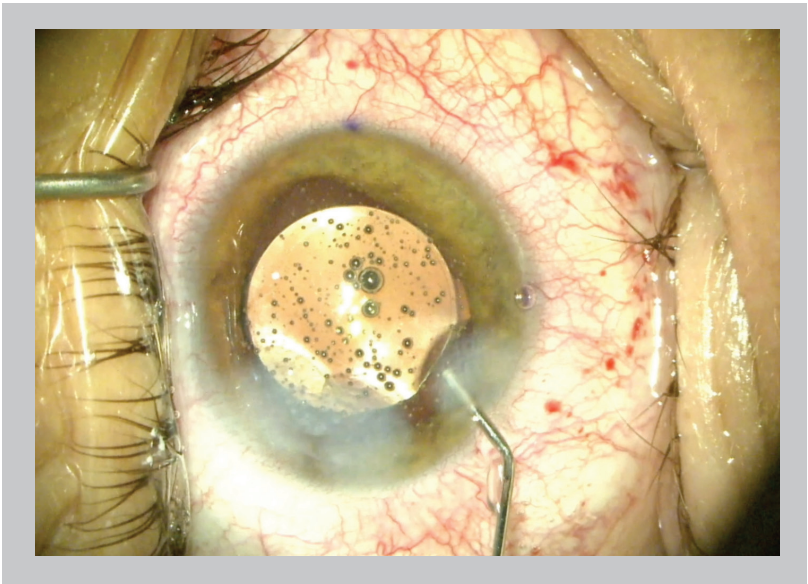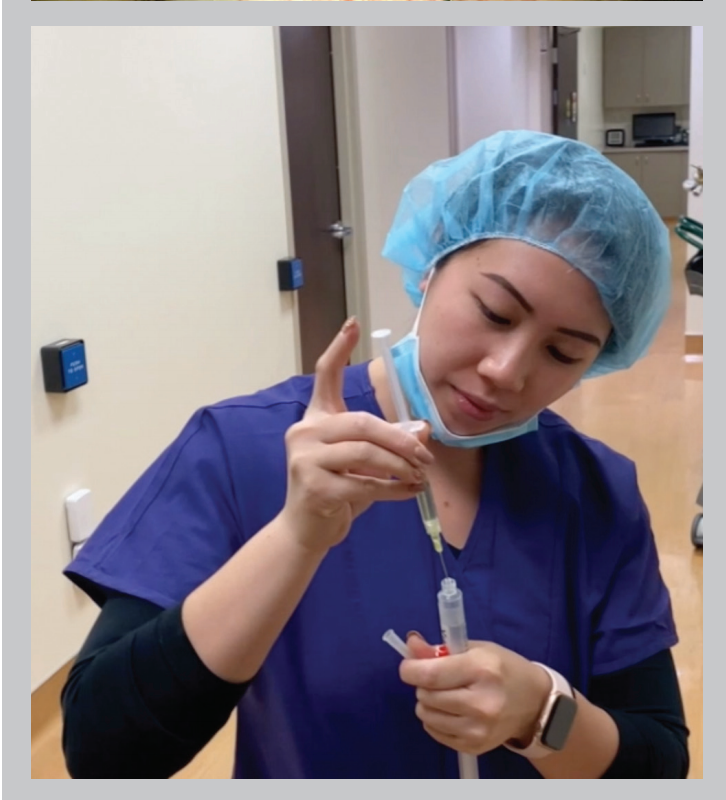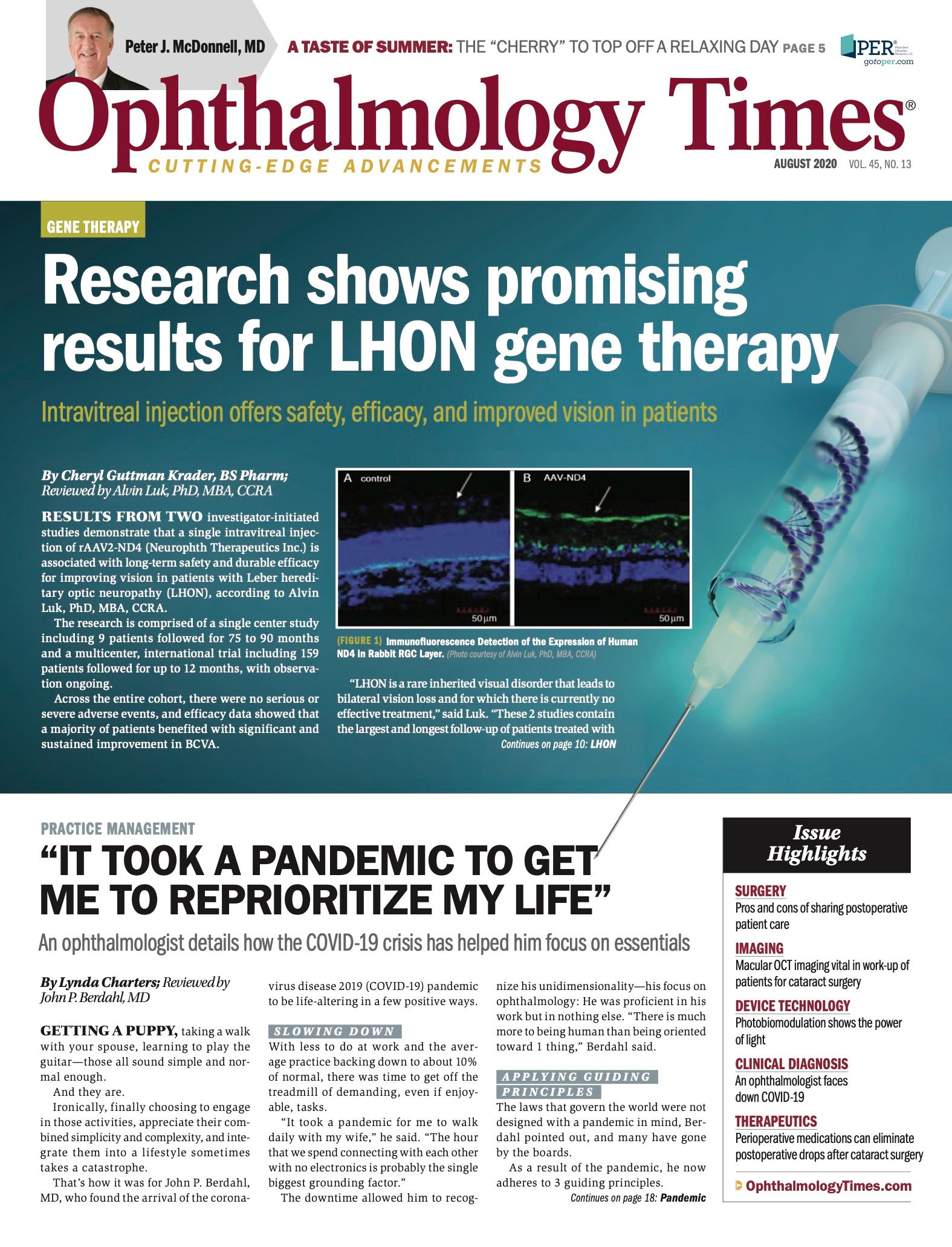Publication
Article
Digital Edition
Perioperative medications can eliminate postoperative drops after cataract surgery
Author(s):
Options can reduce the treatment burden for patients, leading to improved outcomes
The placement of antibiotic after cataract surgery. (All photos courtesy of Scott E. LaBorwit, MD)


This article was reviewed by Scott E. LaBorwit, MD
Practitioners can decrease the treatment burden for patients through the use of available generic and low-cost intraoperative medications that negate the need for patients to purchase medications postoperatively, according to Scott E. LaBorwit, MD.
For example, practitioners can compound antibiotics and steroids and administer them perioperatively via a transzonular or a pars plana approach; however, cataract surgeons might not be comfortable with such a procedure.
Another costly option is steroids that can be deposited in the lacrimal system or under the iris.
Related: Dropless, hands-free regimen key for patients
LaBorwit and Robert Stutman, OD, MBA, conducted a retrospective chart review to identify safe generic or low-cost medications for use at surgery to eliminate patient expenses after surgery.
The sample size was 5400 patients who underwent cataract surgery by 1 surgeon from July 2016 to January 2020. The study’s end point was the absence of the need for patient medication purchases after cataract surgery.
The study’s hypothesis was that use of perioperative antibiotic drops, povidone-iodine 5% during the surgical prep, anterior chamber generic moxifloxacin, and sub-Tenon triamcinolone will eliminate the need for preoperative or postoperative drops.
The investigators evaluated the safety outcomes, which included the incidence rates of infection, IOP elevations resulting from steroids, rebound iritis, and cystoid macular edema, LaBorwit recounted.
They used generic moxifloxacin 1 mg/mL from a commercially available bottle (cost, $47.50 per bottle) with 0.3 cc instilled into the anterior chamber; the moxifloxacin was diluted with balanced saline solution in a 1:4 ratio. The cost per patient of this approach was $1.06, LaBorwit noted.
A nurse prepares an injection for use.

For the steroid component of the treatment, the investigators injected 0.3 cc of triamcinolone 7 mm posterior to the limbus into the superonasal sub-Tenon space; the dose was later decreased to 0.1 cc. The triamcinolone cost $43 per vial and $1.07 per patient.
Related: Topical moxifloxacin: Best choice before cataract surgery?
Results
No intraocular complications occurred as a result of the medication placement. Endophthalmitis did not develop in any cases. Three corneal ulcers developed that resolved with topical and anterior chamber treatment, LaBorwit explained.
The study results showed steroid-induced elevations in the IOP in 102 patients (1.9%), and these were treated with topical antiglaucoma medications.
With reduction of the dose from 0.3 to 0.1 cc, the incidence rate of elevated IOP decreased to 0.67%. Nine (0.17%) patients had persistently elevated IOPs that exceeded 30 days postoperatively.
Related: Predictable, branded steroids offer control over surgery
Cystoid macular edema developed in 1.5% of patients for an average of 35 days. All resolved with drops over time.
Rebound iritis occurred in about 5% of patients, which increased to 6.67% when the steroid volume was decreased, LaBorwit noted.
“The results indicated that generic and low-cost intraoperative medications use is safe and effective and eliminates the need for patients to buy drops postoperatively. The total cost to the surgical center was less than $3 per patient,” LaBorwit concluded.
--
Scott E. LaBorwit, MD
e:sel104@me.com
LaBorwit has no financial interest in this subject matter. Dr LaBorwit is an assistant professor at Wilmer Eye Institute, The Johns Hopkins Hospital, Baltimore, Maryland. Robert Stutman, OD, MBA, is an optometrist in Towson, Maryland.

Newsletter
Don’t miss out—get Ophthalmology Times updates on the latest clinical advancements and expert interviews, straight to your inbox.




